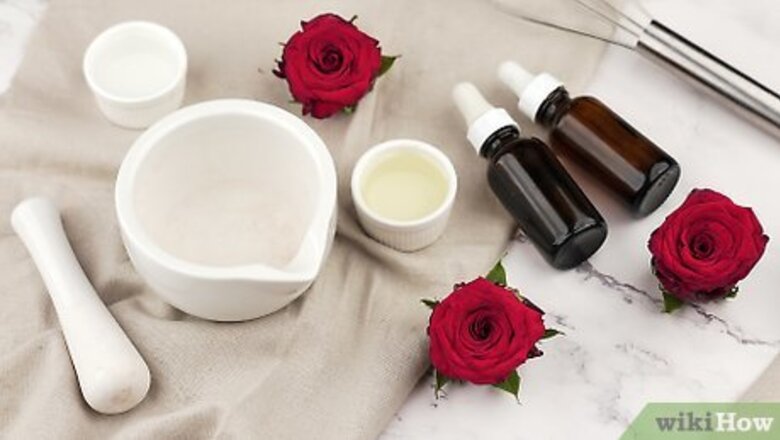
views
Extracting Oils Using Oils or Alcohol
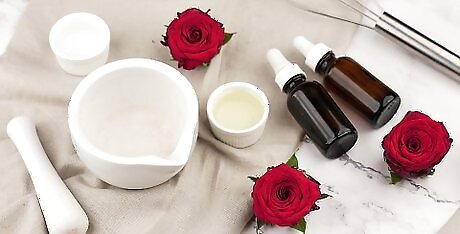
Gather your materials. You can use a common oil, like olive or canola oil, to extract essential oils from plant material. You can also use ethyl alcohol to extract the oils, if you would prefer. Both methods use the same basic process. To start, gather the right supplies. You will need plant material in the form of herbs of flowers, depending on the type of essential oil you're making. For basil essential oil, for example, use basil herbs. For rose essential oil, use rose petals. You can find herbs or flowers at a local grocery store or florist. Make sure any flowers you use are grown organically, as pesticides may be harmful to the skin. Get a large amount of whatever herb or flower you're using, as only a small amount of essential oils can be extracted at a time. You will need two non-metal containers, such as ceramic crocks. You'll also need a strainer. You will need sealable bottles to store your mixture when you're finished. You'll need a carrier oil, like canola or olive oil. If you want to use alcohol instead, aim for ethyl alcohol. If you cannot find this, you can also use unflavored vodka.
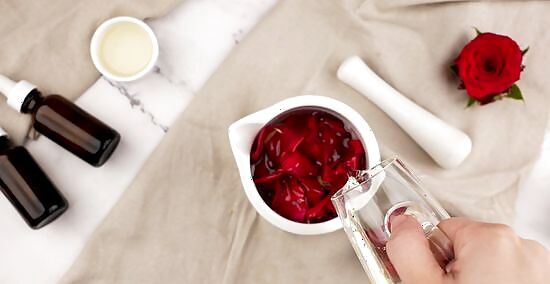
Place your plant material and oil or alcohol in a non-metal container. To start, pour a portion of your oils into your non-metal container. Pour enough to coat the bottom of the container, and then pour the alcohol or oil into the container. Pour just enough to cover the plant material completely.
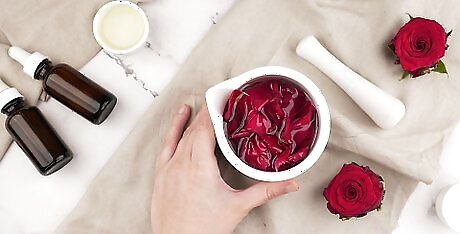
Set the container aside for 24 to 48 hours. Find a safe place to store your container. Your container should be set somewhere where it's unlikely to be knocked over. You should keep it out of reach of children and pets. You'll be leaving the container in this place for 24 to 48 hours. If you want stronger essential oils, opt to set the container aside longer. A high cabinet, which can be closed easily, is a good option if you have small children or pets. Let other household members know you're making essential oils so they know not to disturb the container.
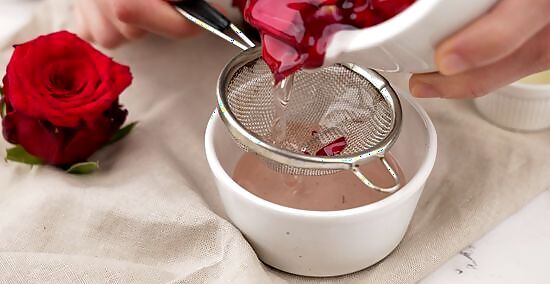
Strain your mixture. After the allotted time has passed, remove the container from its storage place. Take your strainer and pour the mixture through the strainer into another, similarly sized container. Press the plant material lightly with your hand to squeeze out any excess liquid. This will result in more oils being released. If you're using a large container, have someone else hold the other container while you pour to make sure nothing spills.
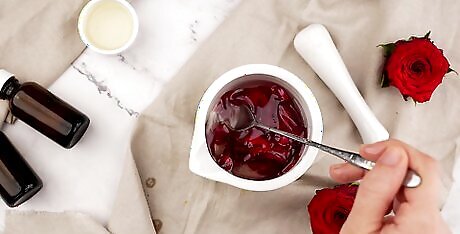
Add more plant material. At this point, your mixture should be giving off the scent of your chosen plant material. However, only a small amount of essential oil has been extracted so far. Rinse out the original crock and add another layer of plant material. Pour the fragrant mixture on top of the plant material.
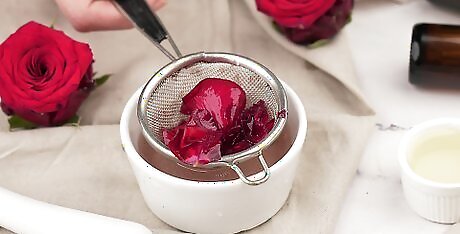
Repeat the process until your essential oil is at your desired strength. Once again, set the container aside for 24 to 48 hours, and then strain the mixture. Repeat this until the mixture gives off a very strong scent of your chosen plant material. In general, it will take 6 to 8 rounds of treatment before you get a satisfactory batch of essential oils.
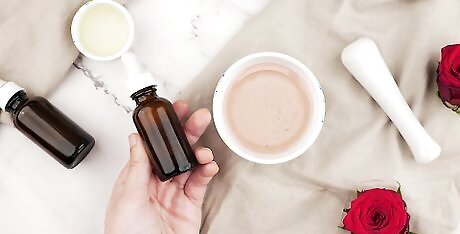
Store correctly. Once you're finished, pour the oil into one or two sealable bottles. Tighten the bottles securely and store the oils in a cool, dark place in your home. Essential oils can be harmful if swallowed. If you have young children capable of opening bottles, make sure to store your oils out of their reach. You should also be careful not to store the oils out of reach of household pets, like dogs, that could chew through a container.
Trying a Steam Method Using a Crock Pot
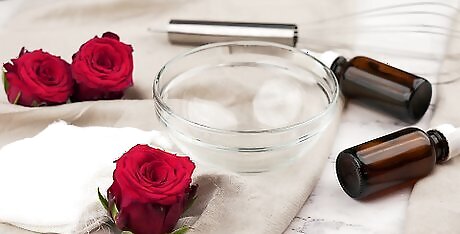
Gather the right supplies. You can also extract essential oils by using steam to extract and capture the oils. You can do this using a crock pot, if you own one. To start, you'll need the following: Plant material from your chosen essential oils A crock pot A glass container A piece of cloth
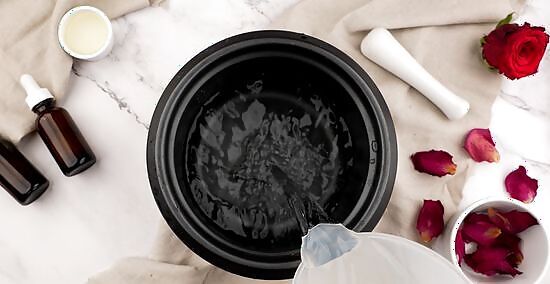
Fill your crockpot with distilled water. Use distilled water here, to make sure your oils are not sullied by chemicals found in tap water. Fill your crock pot about halfway full, or three quarters of the way full, with water.
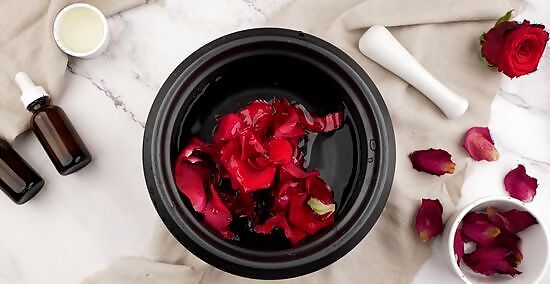
Place your plant material inside the crock pot. Take your chosen plant material. Place it inside the crock pot, allowing it to float on top of the water. You should use just enough plant material that it comfortably fits in the crock pot with distilled water.
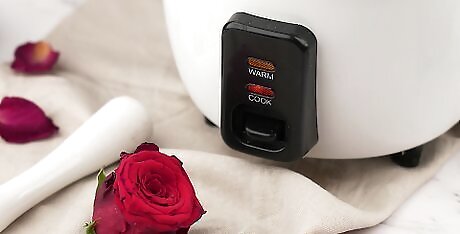
Cook the mixture on low for 24 hours. Turn the crock pot on low heat. Cover as you would when cooking meals using the crock pot. Allow it to cook on low for 24 hours. Be careful where you leave the crock pot. Crockpots cook at low temperatures, and are generally safe to leave on when your'e not home. However, make sure to keep the crock pot in a safe place away from flammable materials.
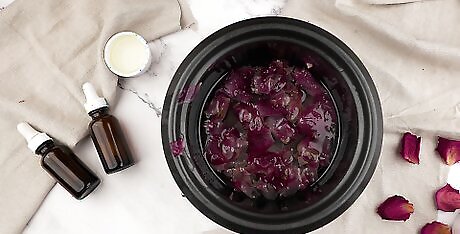
Allow the mixture to sit in the crock pot for another 2 to 3 weeks. After the 24 hour period has passed, you can turn off the crock pot. You should also open the crock pot. Leave the mixture alone for 2 to 3 weeks to allow the oils to be fully extracted from the plants. As you're leaving your crock pot open, it's important to find a safe place for it. This is particularly important if you have children or pets, as the water from the crock pot should not be ingested. A high cabinet, which closes safely, may be your best option. Let other household members know you are making essential oils and they are not to disturb the crock pot.
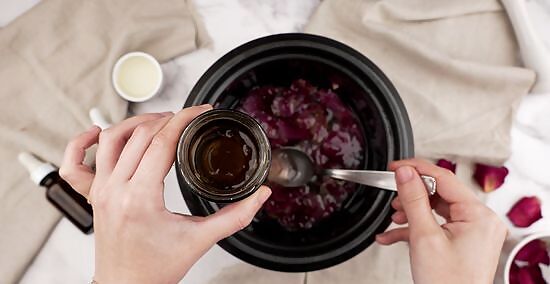
Collect the oil from the surface of the water. After 2 to 3 weeks have passed, a small bit of visible oil should have risen to the surface of the water. You will want to collect this oil and transfer it to a dark, glass container. You can use a cooking spoon or regular spoon to remove the oil. It may take quite a few scoops before you get all the oil. Be careful to collect only the essential oil, and not any water or plant material.
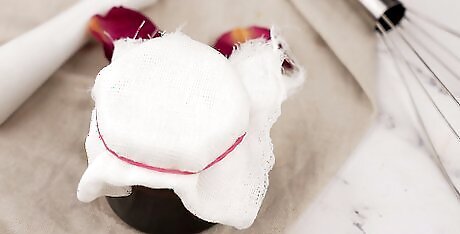
Cover the water with a piece of cloth and set aside for 24 hours. Take your cloth and place on top of the glass container. Set the container aside for 24 hours. After 24 hours have passed, any extra water will have evaporated and your essential oils will be safe to use. As with the crock pot, it's vital that you take precaution when storing your container. Keep it out of reach of children and pets and place it in an area where it will not be disturbed. Your essential oil should last for about 12 months. Place it in a sealable container after 24 hours have passed.
Using a Steam Method with a Cooking Pot
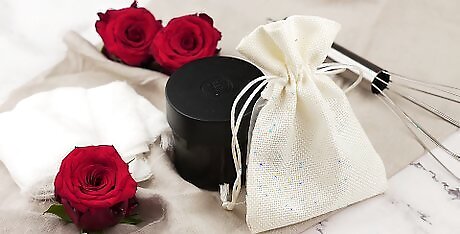
Gather your materials. You may not have a crock pot. You can also use a simple pot of water to make essential oils, although you'll need some extra material. To start, gather the following: Someone to help you, as this method requires two people A cotton and linen bag, as well as string to tie it shut Distilled water A pot A dark glass container A piece of cloth
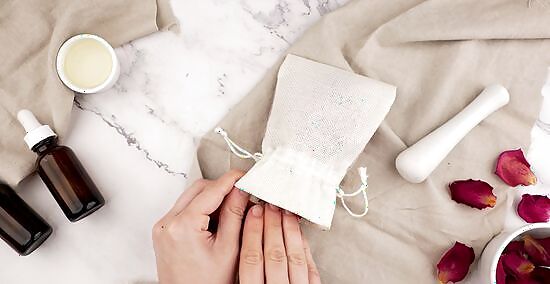
Put your plant material in the cotton or linen bag. Take your chosen plant material and place enough of it into your bag to fill the bag. Tie the bag shut securely. Be careful to make sure the bag is tied completely shut. Pull the knots tight as you tie, and hold the bag upside and shake it to make sure no plant material escapes.
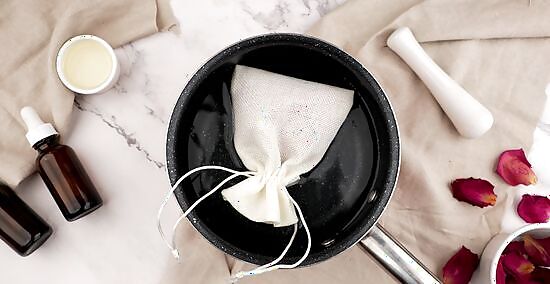
Place your bag in a pot of water and bring it to a boil. Remember to make sure the water you're using is distilled. You do not want contaminants from tap water ruining the purity of your essential oils. Once the bag is submerged, bring the water to a boil.
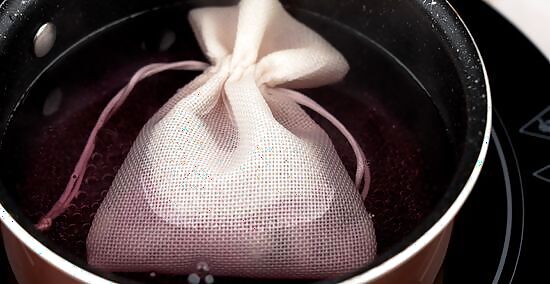
Simmer the water for 24 hours. It can get complicated to simmer the water, as you should never leave a stove on unattended. You will have to have someone help you. The two of you can take turns watching the pot as it simmers for the full 24 hour period. It's a good idea to do this on the weekends, as no one will have work obligations requiring them to wake up early. If you're watching the pot late at night, make sure you're well rested. Use coffee and other caffeinated beverages to keep you alert as you watch the pot. If you fall asleep on duty, the stove could start a fire.
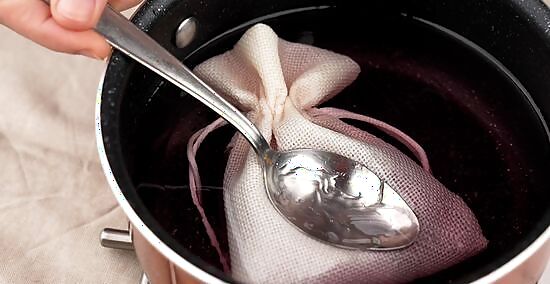
Collect the water from the surface of the pot. After the 24 hours of simmering are over, you will see some oil has risen to the surface of the water. Use a spoon to collect the oil and transfer it into a dark container. Make sure to get mostly oil and not a lot of water. Squeeze the bag a little after collecting the initial oil. There may be a bit of essential oil still inside the bag.
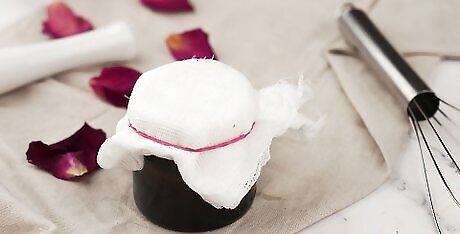
Cover the water with a dark cloth and let it sit for a week. Cover the dark container with a cloth. Set it aside for 24 hours, as this will allow any extra water to evaporate. After this, your essential oil should be ready. You can place it in a sealable glass container. It should last about 12 months. Be careful where you store your container for the 24 hour period. You do not want children or pets to drink the water. Keep it in a safe place, out of reach of others.
Understanding the Drawbacks of Making Your Own Oils
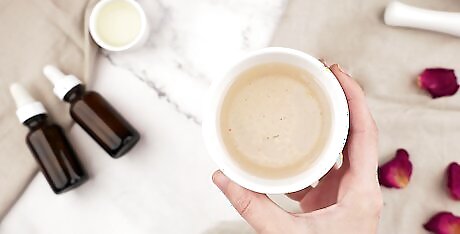
Accept your oils will not be as pure. The major drawback to making essential oils at home is that they will not be as pure as store bought oils. Commercially made essential oils withdraw oils from plant materials using expensive equipment. Professional steaming methods, for example, require materials you would have to get from a chemistry lab. Homemade oils can be a fun project, but do not expect them to be as pure as commercially purchased oils.
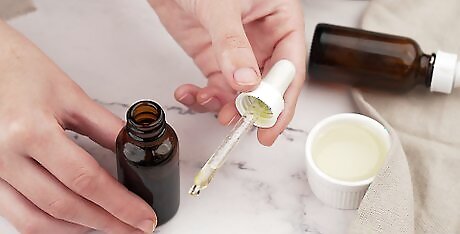
Make sure to follow all regular safety guidelines regarding use of commercial essential oils. While your oils may not be as pure as store bought oils, you should follow similar safety instructions. It's better to be safe than sorry when dealing with essential oils. You should never put essential oils on your skin directly, as this can cause skin irritation or an allergic reaction. Essential oils should always be diluted in a carrier oil, like olive oil or canola oil. Usually, you should aim for 3 to 10% dilution. Children, however, and people with sensitive skin should use only 1% dilutions of essential oil.
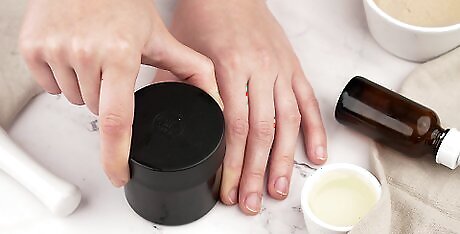
Consider whether making your own oils is worth the time. Essential oils can take weeks to make at home. Even after the process is finished, you'll be left with a product that is not as pure as a store bought equivalent. While essential oils are pricey, the cost of the amount of plant material you'll need for certain recipes may get high. You may be better off simply buying essential oils online, especially if you do not have a lot of spare time.




















Comments
0 comment